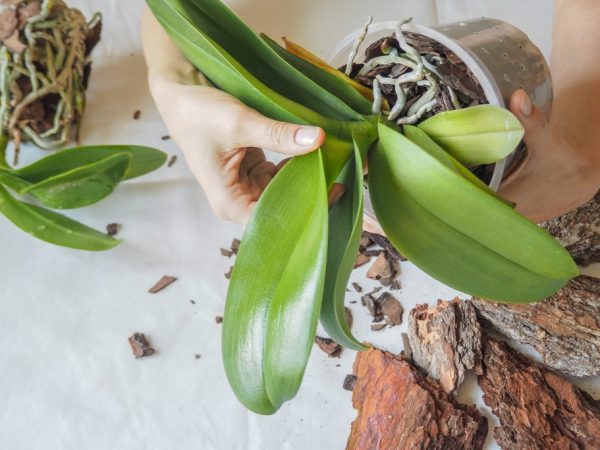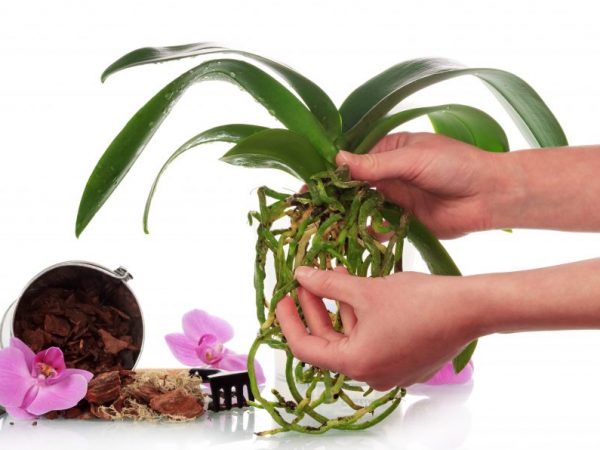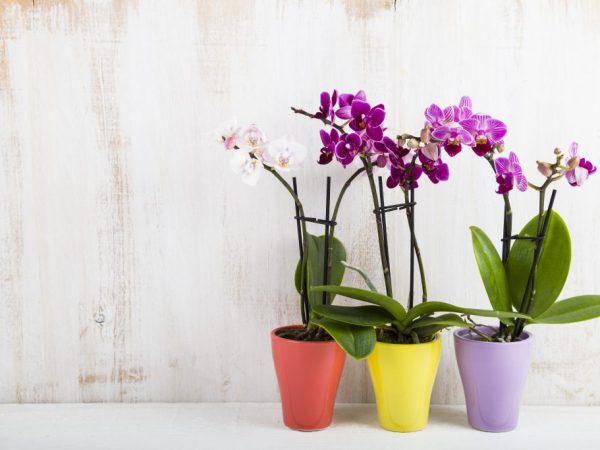Orchid propagation rules by cuttings
Having decided to increase the number of orchids, it is important to study all the options for their reproduction. The most popular is the propagation of orchids by cuttings. This method is faster than growing a flower from seed, but it also has its own characteristics.

Orchid propagation rules by cuttings
Features of cuttings
Cutting is a vegetative method of propagation, the process of separating a part of the mother plant and stimulating it to take root. This method is also popular when breeding monopodial Orchids (Phalaenopsis, Wanda, etc.).
For cuttings, a part of the plant stem that has a growth point is suitable. It is most effective to use a peduncle, which is cut into small pieces. Root germination is carried out in water or on soil (sand or sphagnum moss) in an equipped greenhouse.
Advantages and disadvantages of the method
Orchid propagation by cuttings has several advantages:
- with the correct procedure, the grower receives a plant that has inherited the qualities of the mother flower.
- Breeding is profitable because the Breeding material is always available.
Disadvantages: Difficulty caring for cuttings in the process of awakening dormant buds. Not all of the cut flower arrowheads take root. Most of the harvested material lends itself to rotting, therefore, a large number of harvested cuttings are required for reproduction.

Benefits of orchid propagation by cuttings
Breeding rules
Cutting is the simplest way of reproduction: you need to harvest the material (cut the pet's arrow), create conditions for the emergence of roots and plant the sprouted children in the main place of detention.
Each of the stages of cuttings, from the preparation of tools to planting with subsequent care for the flower, has its own characteristics. It is important to take them into account in order to successfully breed pets.
Preparation of materials and tools
A good time to breed an orchid at home with cuttings is the beginning of spring. During this period, the growing season begins, so rooting of the prepared materials will occur quickly. You can also propagate the flower at the end of the flowering period.
The orchid can be propagated by cuttings only if all the necessary materials are prepared. This will require:
- sharp knife;
- antiseptic;
- Activated carbon;
- sphagnum moss;
- materials for a mini greenhouse (bottle, bag or plastic container).
Before starting work, the instrument is disinfected with an antiseptic using a napkin.
Breeding process
It will turn out to grow a plant at home with the right material for grafting. Such operations are performed with apical cuttings. The peduncle is removed closer to the base, which is divided into small segments. There should be a dormant bud on the handle. The size of the segment is 10-15 cm. The more dormant buds, the better for orchid grafting.
The next step is to treat the cut sites with crushed activated carbon. Wounds on cuttings and on the mother plant are treated.
Following actions:
- At the bottom of a plastic greenhouse container, a layer of sphagnum moss is laid, pre-treated with a root formation stimulator.
- Cuttings are laid on the ground so that the sleeping buds are directed upward.
- The soil is moistened with a spray bottle.
- The container is covered with polyethylene or glass and put away in a well-lit place with an air temperature of at least 24 ° C.

The peduncle is removed closer to the base, which is divided into small segments
It will be possible to propagate the flower when all the conditions for rooting the cutting are created. A substrate that retains moisture and has bactericidal properties is suitable for dilution. Sphagnum moss is most suitable for cultivation.
You will have to moisten the soil every 3-4 days. With such care, after 30-40 days, cuttings will bear their "first fruits" - the first leaves and roots will appear on the harvested planting material.
Pot transfer
After the roots and first leaves appear on the orchid cuttings, they are planted in the ground.
The best option for breeding would be a soil consisting of pine bark, charcoal and sphagnum moss. Small expanded clay is suitable for the drainage layer. All components are disinfected with a solution of potassium permanganate. The drainage layer must be calcined (fried) in a pan.
To grow a healthy orchid, the container must be plastic and transparent. There should be a large number of holes at the bottom to remove excess moisture from the soil and provide air flow to the roots.
Step-by-step instruction:
- At the bottom of the plastic container, drainage is laid with a layer of 4-5 cm.
- The baby obtained from the cutting is placed in a pot.
- Lay the soil.
- Moisten the substrate with a spray bottle.
The flower pot should be removed to a well-lit place. When located on a windowsill, the plant is shaded with a piece of gauze. It is better to water the flower only for 3-4 days. With properly organized care after planting the baby, the cultivation of orchids with cuttings will have a favorable outcome.

After the appearance of the roots and the first leaves, orchid cuttings are planted in the ground
Orchid care
After planting orchid cuttings, it is necessary to create high-quality conditions for the growth and development of the flower. It is important to provide 12 hour daylight hours, organize moderate watering (as the soil dries up). In summer, the room temperature should be in the range of 20-25 ° С, and in winter - 17-20 ° С.
The greatest attention is paid to the organization of irrigation. The soil moisture regime varies depending on the season, as well as the characteristics of the plant. During the growing season: 1-2 times a week. In winter: 1-2 times a month. The water should be kept warm.
For quick rooting of orchid cuttings and their getting used to a new place of cultivation, special attention is paid to the care of fertilization. After the reproduction has been carried out, nitrogen-containing compounds will be required. They will have to be applied every 2 weeks until the plant grows a healthy root system and is ready for the growth of the peduncle.
Having organized the proper care of an orchid grown from a cutting, it will take 2-3 years to expect the first flowering.
Conclusion
The propagation of orchids by cuttings is popular due to the inheritance of the qualities of the mother plant by the resulting flower. With the correct operation and subsequent care, the awakening of the dormant buds and the rooting of the cuttings from the peduncle will occur in 3-4 months.


